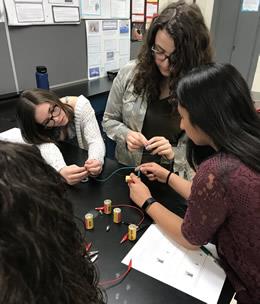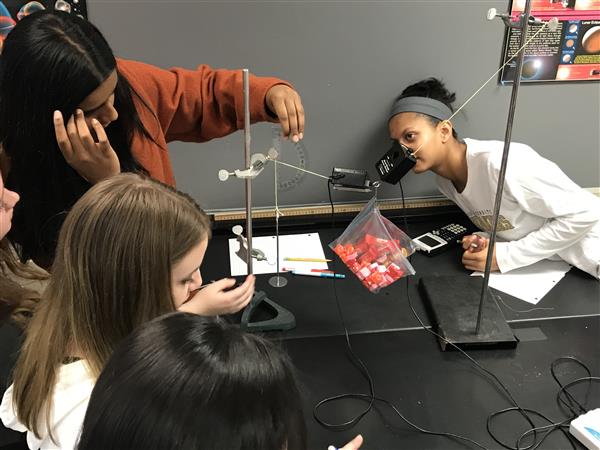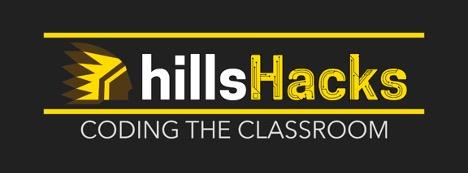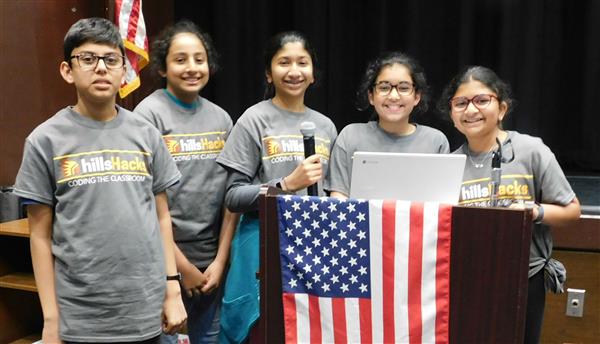- NJASA
- Women in Leadership Corner April 2020

-
Closing the Gender and Equity Gap in STEM
We often hear that we are preparing students for jobs that do not currently exist. Policymakers, business leaders, politicians and educators have championed one field - the STEM field - which incorporates the contributions of innovations in science, technology, engineering, and mathematics (STEM) fields to our nation’s prosperity and competitiveness in the global marketplace. The science and engineering workforce has experienced much more rapid growth over the last several decades than the rest of the workforce, increasing from 1.1 million in 1960 to nearly 6.7 million in 2015 – a 50% higher growth rate than for the total workforce during the same timeframe (NSF, 2018). Moreover, Bureau of Labor Statistics projections indicate that total employment in science and engineering fields during the period 2014–2024 will increase at a rate of 11% compared to 7% for the total workforce (NSF, 2018). The President’s Council of Advisors on Science and Technology (2012) projects that, in order to meet the growing demand of the STEM workforce and to remain competitive in the fields of science and technology over the next decade, the United States will need more than one million additional STEM professionals than it will produce. As educators, we need to cultivate a STEM pipeline of students to fill this growing need.
 While we develop this pipeline, we need to be mindful that there is a major equity issue. Despite growing demands for more STEM-educated employees, women and minorities are currently an underutilized source of intellectual capital that could fill the need in STEM-related careers. The STEM field in the United States remains primarily male and white (Bottia, Stearns, Mickelson, Moller, & Parker, 2015). Despite accounting for half of the college-educated workforce in the United States, only about one-third of earned STEM degrees are awarded to women, and only 25% of college educated STEM workers are women (Duran & Lopez, 2015; Noonan, 2017). My background as a mathematics and economics major and a high school math teacher led me to research the link between taking AP STEM courses and the likelihood of selecting a STEM major in college, and whether that likelihood differs by gender and/or race/ethnicity. The results of my study clearly indicated a link between factors such as math and science self-efficacy, educational aspirations, and exposure to AP STEM courses in high school and STEM major selection. Not surprisingly, the odds of a female student pursuing a STEM major are 46% lower than for male students. However, the research model also indicates that exposure to AP STEM courses is related to increased odds of selecting a STEM major more significantly for female students than male students. More simply stated, AP STEM course participation seems to decrease the gender gap in pursuit of a STEM field. While further analyses are needed to confirm my findings, school leaders and guidance counselors might consider using this information to help guide female students and their parents in the course selection process.
While we develop this pipeline, we need to be mindful that there is a major equity issue. Despite growing demands for more STEM-educated employees, women and minorities are currently an underutilized source of intellectual capital that could fill the need in STEM-related careers. The STEM field in the United States remains primarily male and white (Bottia, Stearns, Mickelson, Moller, & Parker, 2015). Despite accounting for half of the college-educated workforce in the United States, only about one-third of earned STEM degrees are awarded to women, and only 25% of college educated STEM workers are women (Duran & Lopez, 2015; Noonan, 2017). My background as a mathematics and economics major and a high school math teacher led me to research the link between taking AP STEM courses and the likelihood of selecting a STEM major in college, and whether that likelihood differs by gender and/or race/ethnicity. The results of my study clearly indicated a link between factors such as math and science self-efficacy, educational aspirations, and exposure to AP STEM courses in high school and STEM major selection. Not surprisingly, the odds of a female student pursuing a STEM major are 46% lower than for male students. However, the research model also indicates that exposure to AP STEM courses is related to increased odds of selecting a STEM major more significantly for female students than male students. More simply stated, AP STEM course participation seems to decrease the gender gap in pursuit of a STEM field. While further analyses are needed to confirm my findings, school leaders and guidance counselors might consider using this information to help guide female students and their parents in the course selection process. According to the Extraordinary Women Engineers Project (2005), women seek a career that is relevant, rewarding, and impactful to society. Female students are often turned off by the messages sent from academia regarding the cutthroat, stressful world of STEM professions (Sinkele & Mupinga, 2011). Research has shown that all-girl STEM-focused workshops, such as summer camps and after school programs, that demonstrate to young women that careers in STEM can be fulfilling can stimulate interest among female students in pursuing STEM fields (Sinkele & Mupinga, 2011). Additionally, ensuring that female students have access to women in STEM fields as role models and resources (e.g., teachers, guest speakers) with whom they can relate and picture their own future through has also been shown to help spark interest among female students in STEM fields (Buschor, Berweger, Frei, & Kappler, 2014; Hermann, Adelman, Bodford, Graudejus Okun, & Kwan, 2016; Sinkele & Mupinga, 2011).
According to the Extraordinary Women Engineers Project (2005), women seek a career that is relevant, rewarding, and impactful to society. Female students are often turned off by the messages sent from academia regarding the cutthroat, stressful world of STEM professions (Sinkele & Mupinga, 2011). Research has shown that all-girl STEM-focused workshops, such as summer camps and after school programs, that demonstrate to young women that careers in STEM can be fulfilling can stimulate interest among female students in pursuing STEM fields (Sinkele & Mupinga, 2011). Additionally, ensuring that female students have access to women in STEM fields as role models and resources (e.g., teachers, guest speakers) with whom they can relate and picture their own future through has also been shown to help spark interest among female students in STEM fields (Buschor, Berweger, Frei, & Kappler, 2014; Hermann, Adelman, Bodford, Graudejus Okun, & Kwan, 2016; Sinkele & Mupinga, 2011).As the aforementioned research indicates, outreach to female middle school students and their parents by high school faculty can be an effective tool for igniting female student interest in enrolling in STEM courses once they reach high school (Buschor, Berweger, Frei, & Kappler, 2014; Hermann, Adelman, Bodford, Graudejus Okun, & Kwan, 2016; Sinkele & Mupinga, 2011). STEM-themed family nights, curriculum information nights for parents, classroom visits for incoming students, and other collaborative endeavors showcasing opportunities have the potential of sparking conversation between teachers, parents, and students that can help set students on a path toward active enrollment in STEM courses. At Watchung Hills, we have made a deliberate effort to close this gender gap in STEM through such experiences, including the following:
- “Hillshacks” during which students, ranging from middle through high school, dedicated a Sunday afternoon to learning more about computer coding, various computer languages and the importance of Computer Science (CS) education.
- High school student-led workshops at our middle schools, including topic such as coding in music, the art of video game design, and “Girls Who Code”
- Participation in “Girls Go Cyber” competition
- School-wide Hour of Code activities, including a lunchtime scavenger hunt that drew high participation by our students in our out-of-class resource math courses

I believe it is a combination of these efforts, led by our female AP Computer Science teacher, that led to the recognition Watchung Hills received last year as a recipient of the inaugural AP Computer Science A Female Diversity Award as well as a place in the Code.org Hall of Fame.
Despite the growing demand for more STEM professionals, women and minorities are still an underutilized source of intellectual capital that can and should be tapped into. Doing so creates equity across genders and racial/ethnic groups as well as fosters inclusion of more diverse perspectives to enhance STEM innovations. Efforts to expand the number and diversity of those in STEM fields need to begin early on in students’ academic careers. At Watchung Hills, we have made a deliberate effort to seize the opportunity to implement targeted programs and practices, such as promoting access to AP STEM courses, in order to encourage and support students in pursuing paths to STEM-related careers — a crucial step in the expansion of the U.S. STEM workforce. By us all working together to address this issue, we will not only be preparing our students for the ever-developing 21st century workforce, but we will be closing the gender and equity gap as well.

Bottia, M. C., Stearns, E., Mickelson, R. A., Moller, S., & Parker, A. D. (2015). The relationships among high school STEM learning experiences and students' intent to declare and declaration of a STEM major in college. Teachers College Record, 117(3), 46. Retrieved from http://www.tcrecord.org/Content.asp?ContentId=17806
Buschor, C.B., Berweger, S., Frei, A.K., & Kappler, C. (2014). Majoring in STEM— What accounts for women's career decision making? A mixed methods study. The Journal of Educational Research, 107:3, 167-176, DOI: 10.1080/00220671.2013.788989
Duran, A., & Lopez, D. (2015). Women from diverse backgrounds in the science, technology, engineering, and math (STEM) professions: Retention and career development. In Hughes, C. (Ed.), Impact of diversity on organization and career development (pp. 214–251). Hershey, PA: Business Science Reference.
The Extraordinary Women Engineers Project (EWEP). 2005. Extraordinary Women Engineers final report, April 2005. Available at http://kellrobotics.org/files/pdf/EWE.pdf.
Hermann, S.D., Adelman, R.M.,,Bodford, J.E., Graudejus, O., Okun, M.A., & Kwan, V.S.Y. (2016). The effects of a female role model on academic performance and persistence of women in STEM courses. Basic and Applied Social Psychology, 38:5, 258-268, DOI: 10.1080/01973533.2016.1209757
National Science Foundation. (2018). Science and engineering indicators 2018. Retrieved from https://www.nsf.gov/statistics/2018/nsb20181/report.
Noonan, R. (2017). Women in STEM: 2017 update. ESA issue brief #06-17. ().US Department of Commerce, 1401 Constitution Avenue NW, Washington, DC 20230. Retrieved from ERIC Retrieved from https://search.proquest.com/docview/2228634019?accountid=13793
Sinkele, C. N., & Mupinga, D. M. (2011). The effectiveness of engineering workshops in attracting females into engineering fields: A review of the literature. The Clearing House: A Journal of Educational Strategies, Issues and Ideas, 84(1), 37–42.


